Why Kerala is the best place to visit? With natural beauty, Ayurveda, and culture, Kerala stands out as a must-visit destination in South India. Kerala stands out as one of India’s most inviting destinations, offering a mix of natural beauty, cultural depth, and unique experiences. It is the best place to visit because it combines serene backwaters, lush hills, vibrant traditions, and warm hospitality in one region. Few places can match its balance of relaxation, exploration, and adventure.
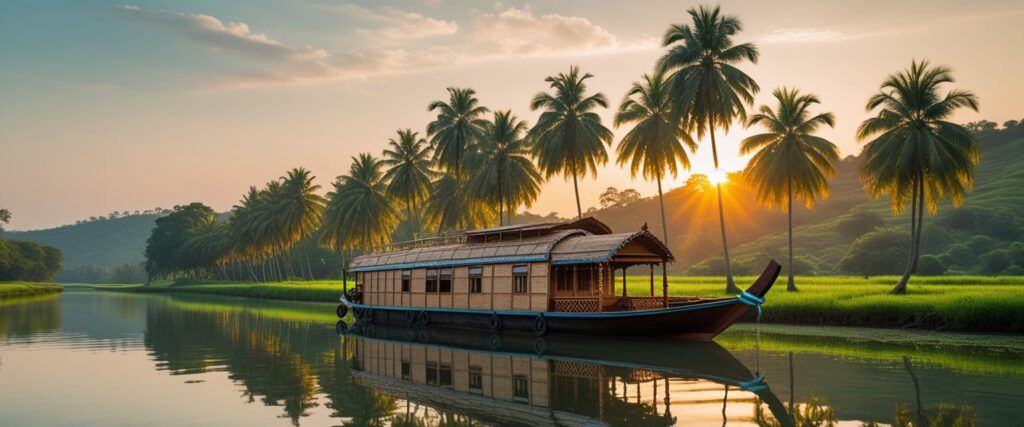
From palm-fringed beaches along the Arabian Sea to the rolling tea plantations in the Western Ghats, Kerala delivers variety in every journey. Travelers find themselves drawn to its houseboat cruises, wildlife sanctuaries, and centuries-old temples that reflect a rich heritage. Why Kerala is the best place to visit? Explore its houseboats, spice gardens, beaches, and wildlife sanctuaries for a perfect holiday in India.
Whether someone seeks wellness through Ayurveda, excitement through trekking, or peace in coastal towns, Kerala provides it all in a way that feels both authentic and unforgettable. This blend of landscapes and culture is what makes it a destination worth exploring in depth.
Table of Contents
Why Kerala is the best place to visit?
Kerala offers a rare mix of natural beauty, cultural depth, and unique experiences that appeal to many types of travelers. From lush hills and wildlife to vibrant traditions and flavorful food, every part of the state provides something distinct and memorable.
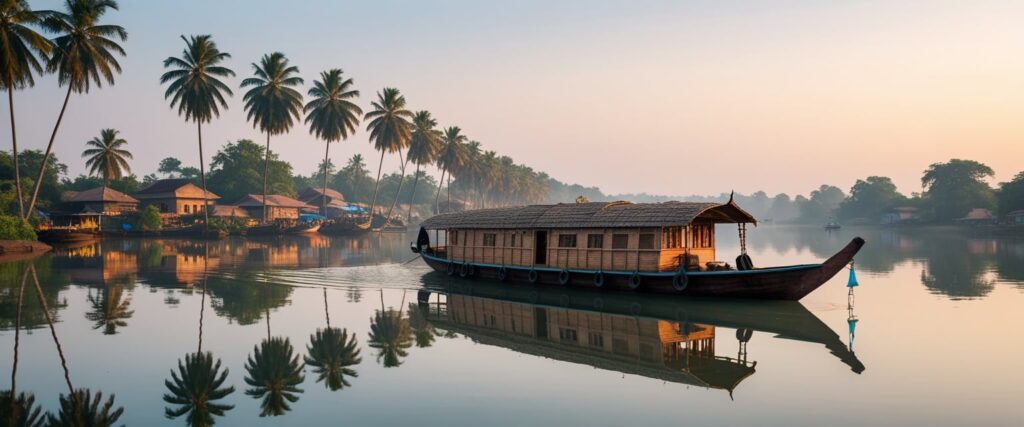
Unique Natural Landscapes and Biodiversity
Kerala’s geography stretches from the Arabian Sea coast to the high ranges of the Western Ghats. This creates diverse ecosystems where tropical forests, wetlands, and mountains thrive side by side.
The hill stations of Munnar and Wayanad are known for their rolling tea plantations, waterfalls, and misty valleys. Wildlife reserves such as Thekkady’s Periyar National Park and Silent Valley protect species like the Bengal tiger, lion-tailed macaque, and Asian elephant.
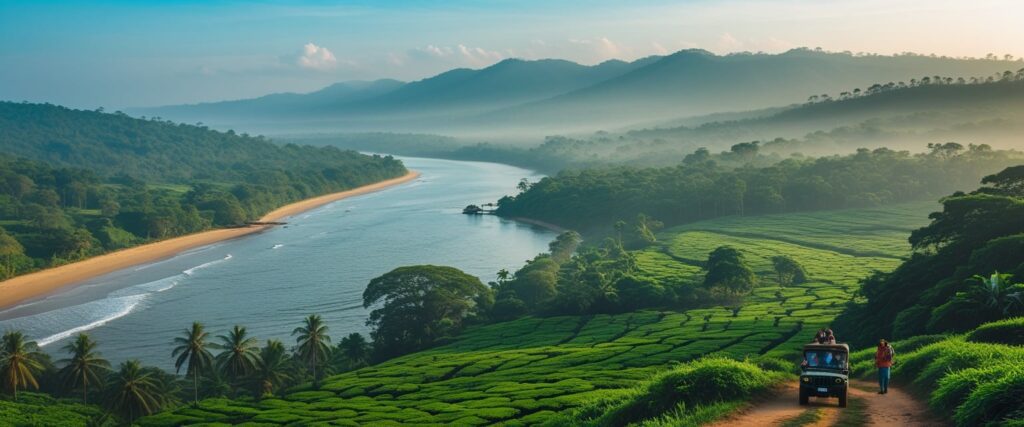
Travelers can explore trekking trails, birdwatching spots, and forest safaris. These natural areas not only showcase Kerala’s biodiversity but also highlight why the state is often called God’s Own Country.
Fascinating Backwaters and Houseboat Experiences
The Kerala backwaters form a network of canals, lagoons, and lakes running parallel to the sea. Towns like Alleppey, Kumarakom, and Kollam are famous for their calm waterways lined with coconut palms and small villages.
A stay on a Kerala houseboat allows visitors to drift past rice paddies, temples, and fishing communities. Many houseboats include furnished rooms, kitchens, and decks for viewing the scenery.
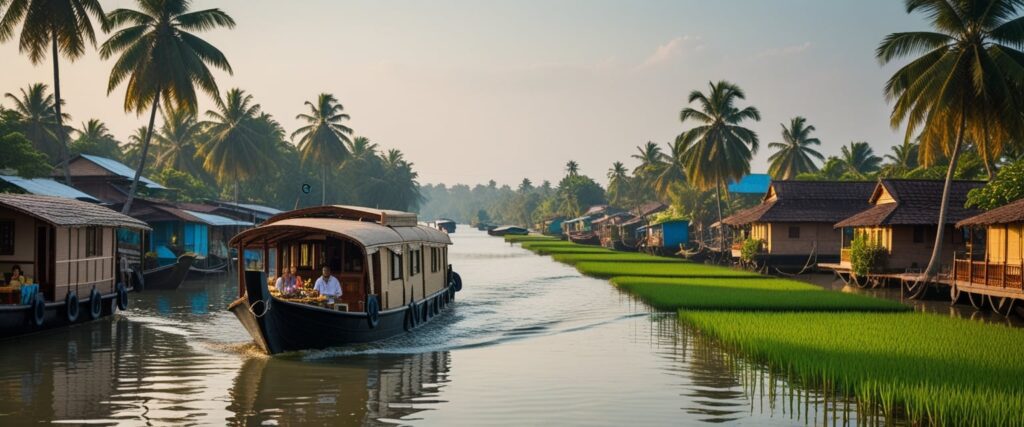
Travelers often enjoy traditional meals onboard while watching local life unfold along the banks. This slow-paced experience has become one of the most popular reasons people choose to visit Kerala’s backwaters.
Rich Cultural Heritage and Art Forms
Kerala’s history blends Hindu, Christian, and Muslim influences, visible in its temples, churches, and mosques. Fort Kochi reflects Portuguese, Dutch, and British architecture, making it a cultural hub for history enthusiasts.
The state is also home to classical art forms. Kathakali, with its elaborate costumes and painted faces, tells stories from epics like the Mahabharata. Mohiniyattam and Koodiyattam highlight graceful movements, while Kalaripayattu, one of the oldest martial arts, demonstrates discipline and skill.
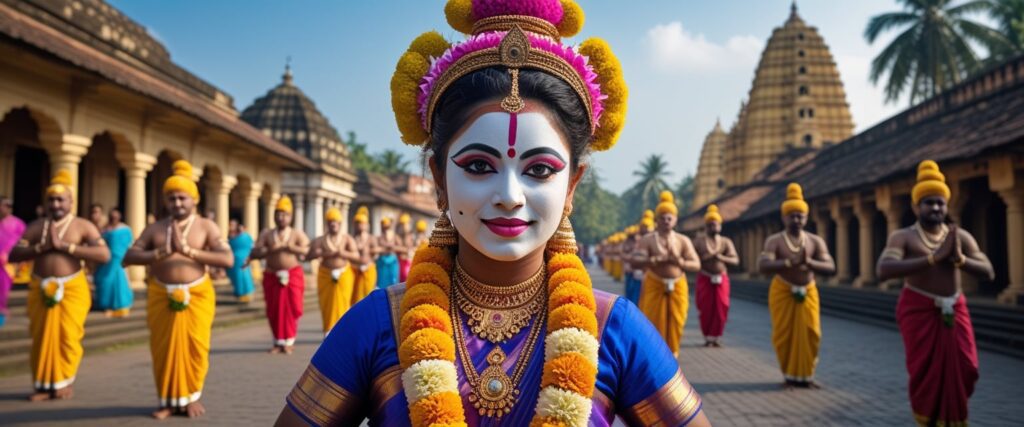
Festivals such as Onam bring together dance, music, and rituals, offering travelers a chance to experience local traditions firsthand.
Exquisite Kerala Cuisine and Culinary Delights
Kerala cuisine emphasizes rice, coconut, and spices, with both vegetarian and seafood dishes playing a central role. Meals often include curries flavored with black pepper, cardamom, and curry leaves.
Popular staples include appam (rice pancakes), puttu (steamed rice flour with coconut), and fish curry. Banana chips, tapioca dishes, and seafood specialties are also widely enjoyed.
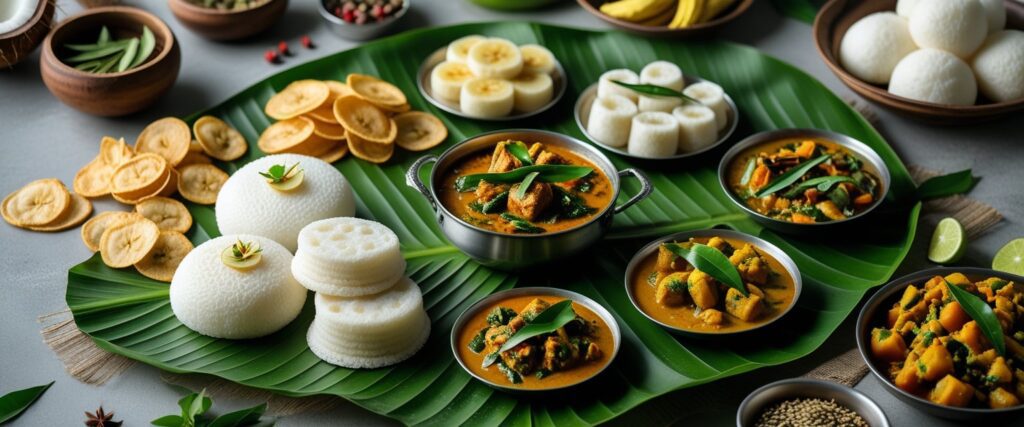
Food is often served on banana leaves, especially during festivals and feasts. Dining in Kerala provides not only nourishment but also an introduction to the state’s agricultural traditions and spice trade history, which shaped its global connections.
Unforgettable Experiences in Kerala
Kerala offers a mix of coastal escapes, wellness traditions, and natural landscapes. Visitors can enjoy quiet beaches, explore adventure activities, and relax in the cool climate of the hills while spotting wildlife.
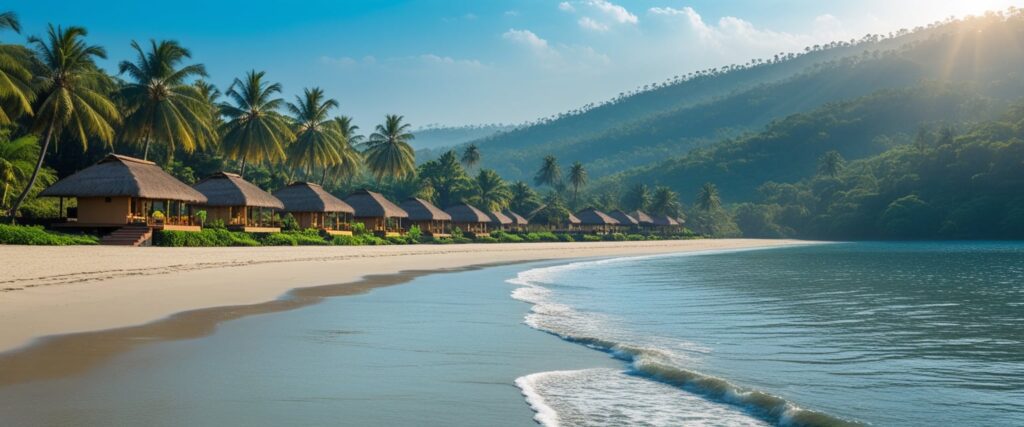
Pristine Beaches and Water Sports
Kerala’s coastline stretches for over 500 km, with beaches that range from lively to secluded. Varkala Beach is known for its dramatic cliffs and natural springs, while Kovalam offers a crescent-shaped shoreline with calm waters. Marari Beach remains quieter, drawing those who want a slower pace, and Kannur and Bekal feature long sandy stretches with historic forts nearby.
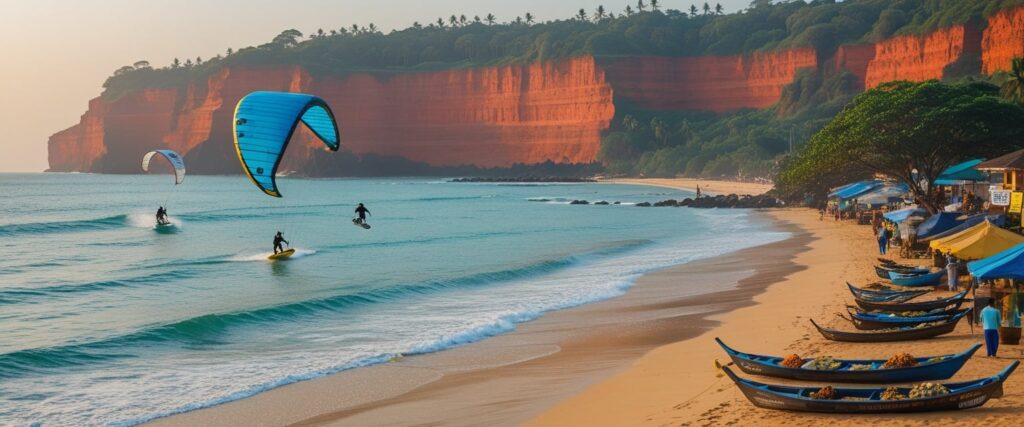
Water sports are popular in many of these areas. Activities include parasailing, jet skiing, and surfing. Kovalam is one of the most active hubs for water sports, while Varkala attracts surfers with its strong waves.
Many beaches also host local fishing communities, giving visitors a chance to see traditional practices. Sunset views, seafood stalls, and coastal walks make these spots more than just places to swim.
| Beach | Highlight | Activity |
|---|---|---|
| Varkala | Cliffs & springs | Surfing |
| Kovalam | Crescent beach | Parasailing |
| Marari | Quiet setting | Relaxation |
| Kannur | Cultural vibe | Fishing villages |
| Bekal | Historic fort | Scenic walks |
Ayurveda and Wellness Retreats
Kerala is widely recognized as the home of Ayurveda, an ancient system of natural healing. Many visitors choose to stay in wellness retreats where treatments focus on balance and relaxation. Common therapies include herbal oil massages, detox programs, and yoga sessions.
Many of these centers are set near the serene backwaters or peaceful beaches, creating a natural environment that enhances the treatments. Resorts in Kovalam and Varkala are especially popular with international visitors, showing once again why Kerala is the Best Place to Visit for those seeking health and relaxation.
Centers often sit near beaches or backwaters, combining a natural setting with traditional practices. Kovalam and Varkala both have well-known Ayurvedic resorts that attract international travelers.
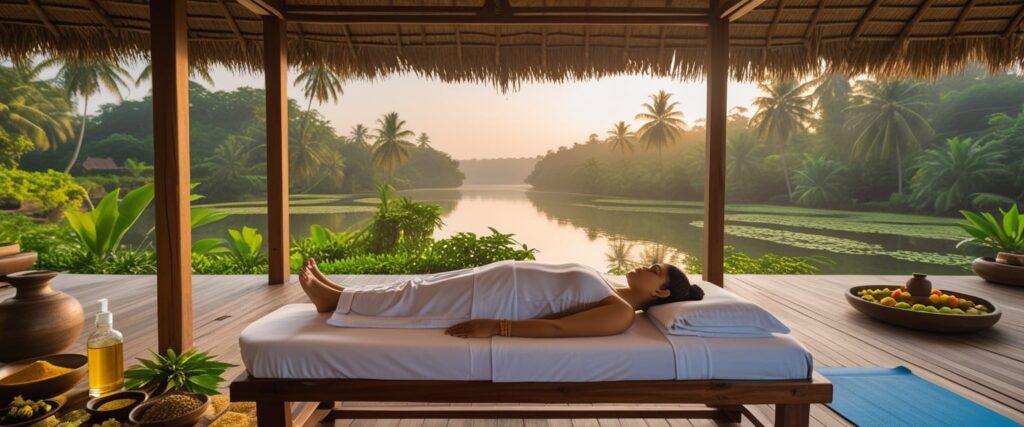
These retreats usually offer personalized treatment plans. Guests may receive dietary guidance, meditation sessions, and stress relief therapies. The focus is not only on physical health but also on mental well-being.
Ayurveda in Kerala has become a year-round attraction, with many travelers planning their trip specifically around these experiences.
Charming Hill Stations and Wildlife Sanctuaries
The Western Ghats run through Kerala, creating a landscape of cool hill stations and forested reserves. Munnar is famous for its tea plantations and misty valleys, while Wayanad combines waterfalls, caves, and spice farms. Thekkady, home to Periyar Wildlife Sanctuary, offers boat rides where visitors may spot elephants, bison, and deer.
Wildlife sanctuaries protect a wide range of species. Silent Valley National Park houses rare birds and butterflies, while Eravikulam National Park is known for the endangered Nilgiri tahr.
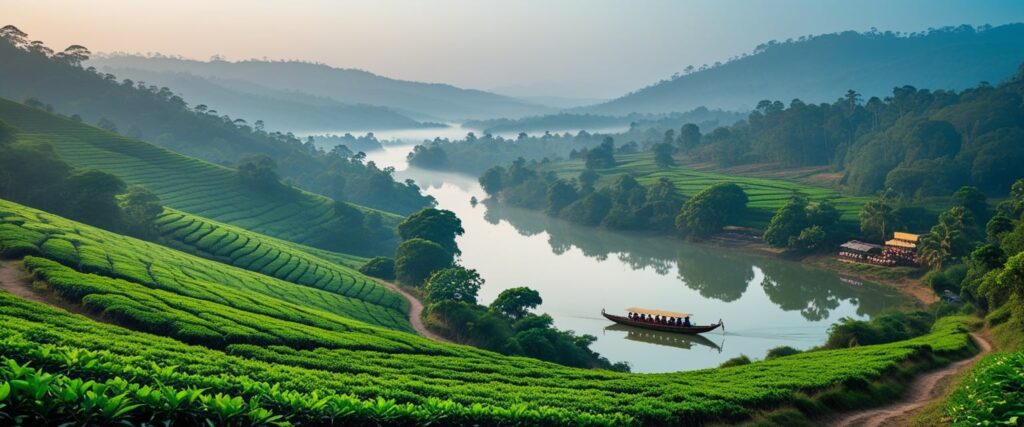
Hill stations also provide trekking routes and viewpoints. Travelers can walk through cardamom estates, visit spice markets, or enjoy cool evenings away from the coastal heat.
These regions balance adventure with calm, making them ideal for those who want both activity and rest.
Conclusion
When travelers ask “Why Kerala is the Best Place to Visit?”, the answer lies in its rare blend of natural beauty, cultural depth, and authentic experiences. From backwaters to beaches, Kerala showcases diversity that explains why Kerala is the best place to visit in India for both leisure and adventure.
For those who enjoy cultural festivals, Ayurveda, and traditional art forms, it becomes clear again why Kerala is the Best Place to Visit? Every journey through the state feels like a celebration of heritage and hospitality.
Nature lovers discover endless reasons for why Kerala is the best place to visit—lush hills in Munnar, tea estates in Wayanad, and the rich wildlife of Periyar. Families, couples, and solo travelers all agree that this balance of variety defines why Kerala is the Best Place to Visit?
The backwaters of Alleppey, the pristine beaches of Varkala, and the wellness retreats of Kovalam continuously remind visitors why Kerala is the best place to visit for relaxation and rejuvenation. Food enthusiasts too, with Kerala’s spices and seafood, realize why Kerala is the Best Place to Visit? when it comes to culinary adventures.
In the end, no matter your interests—culture, cuisine, nature, or wellness—you will always find yourself saying, “Yes, this is why Kerala is the Best Place to Visit.”
Frequently Asked Questions
Kerala draws visitors with its natural beauty, cultural depth, and flavorful food. Its history with spices, unique traditions, and famous landmarks make it one of the most distinctive destinations in India.
What are the top tourist attractions in Kerala?
Travelers often visit the backwaters of Alleppey for houseboat cruises. Hill stations like Munnar offer tea plantations and cool weather. Popular beaches include Kovalam and Varkala, while Periyar Wildlife Sanctuary attracts those interested in nature and wildlife.
What is the best time of year to visit Kerala?
The most comfortable time to visit is between October and March when the weather is cooler and less humid. The monsoon season from June to September is ideal for Ayurvedic treatments but may limit outdoor activities.
What unique souvenirs can one buy in Kerala?
Visitors often purchase spices such as cardamom, pepper, and cinnamon. Handcrafted items like coir products, Kathakali masks, and traditional Kerala sarees are also popular. Tea and coffee from the plantations in Munnar are widely bought as gifts.
What are the renowned cuisines one must try when in Kerala?
Kerala cuisine highlights fresh seafood, coconut-based dishes, and rice. Popular meals include appam with stew, Malabar biryani, and fish curry. Banana chips and payasam are common snacks and desserts enjoyed by both locals and tourists.
How does Kerala’s spice trade contribute to its tourism?
Kerala has been a center of the spice trade for centuries, attracting traders from across the world. Today, visitors tour spice plantations in Thekkady and Munnar to learn about cultivation and processing. Many travelers buy spices directly from local markets, linking agriculture with tourism.
What makes Kerala’s culture unique in attracting tourists?
Kerala’s culture blends Hindu, Christian, and Muslim traditions. Classical dance forms like Kathakali and Mohiniyattam, along with temple festivals and traditional music, showcase this heritage. Tourists also appreciate the region’s Ayurvedic practices and its reputation for warm hospitality, which adds to the cultural appeal.
